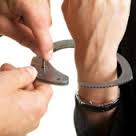In a recent California appellate decision, a defendant appealed a judgment entered after a jury trial in which he was convicted of a DUI under Vehicle Code section 23152 and DUI with a blood alcohol content (BAC) of .08 or greater. The lower court found the defendant had been convicted of three prior DUI offenses and determined to be true the allegations for enhancement purposes that the defendant drove under the influence with a BAC of .08 or greater within 10 years of 3 prior DUI convictions under Section 23550. The lower court put in place a three year jail sentence.
The defendant claimed his identity was not established by certified minute orders presented as proof of prior convictions and therefore the lower court’s findings about his prior convictions were not bolstered by substantial proof. The appellate court disagreed.
The case arose when the police pulled over the defendant on I-110 after he was seen weaving and almost hitting another car. The officer saw the glossiness of the defendant’s eyes and observed he was slurring his words. He asked for help from the California Highway Patrol in connection with a DUI. The officer came to the scene and immediately saw the defendant showed signs and symptoms of intoxication such as slurred speech and red and watery eyes. The defendant claimed this was the result of one margarita. However, field sobriety tests showed he was impaired because of alcohol and his BAC was .187-.179.
 San Diego DUI Lawyers Blog
San Diego DUI Lawyers Blog








